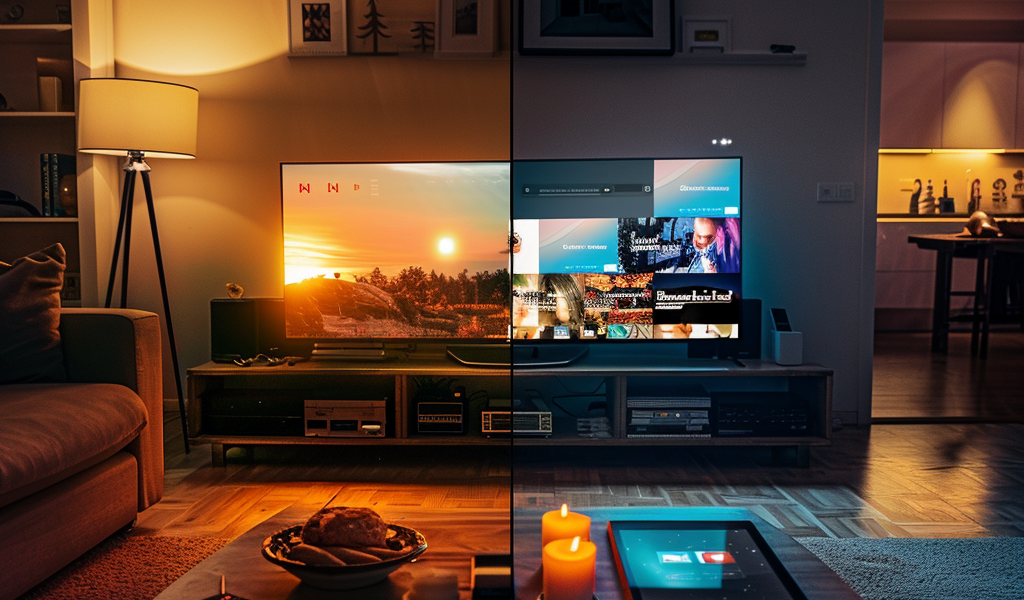As the landscape of television continues to evolve, cable companies are facing unprecedented challenges. Recent reports indicate that the decline in traditional pay TV subscriptions is accelerating, with an estimated 4 million U.S. households cutting the cord in the first half of 2024 alone. Analysts predict this trend will continue, with the number of homes subscribing to traditional cable packages expected to drop below 47 million by the end of the year. This shift marks a significant turning point for the pay-TV ecosystem, which is struggling to adapt to changing viewer preferences.
The rise of streaming services has fundamentally altered how audiences consume content, leading to the decline of traditional cable subscriptions. Many viewers are now opting for on-demand streaming platforms that offer flexibility and a wider variety of content at competitive prices. In light of these challenges, cable providers are beginning to explore innovative strategies to retain customers and adapt to the new market dynamics.
In a notable development, Charter Communications recently announced a distribution agreement with Warner Bros. Discovery (WBD) that could reshape the way cable and streaming coexist. Under this new deal, Charter’s Spectrum video customers will gain access to the ad-supported versions of WBD’s Max and Discovery+ services as part of their cable subscriptions. This partnership is a strategic move aimed at providing added value to cable packages, encouraging customers to maintain their subscriptions in a time when many are considering cutting ties with traditional cable.
This agreement is particularly significant as it follows similar partnerships Charter has established with other major streaming platforms, including Disney+, Paramount+, and AMC+. By bundling these streaming services with cable subscriptions, Charter aims to present a compelling case to potential customers: maintain your cable subscription, and enjoy access to a variety of popular streaming services without additional costs.
While some media coverage has highlighted the ‘free’ access to HBO programming through the Max service, this perspective oversimplifies the complexities of the deal. Spectrum customers who benefit from this arrangement are already paying substantial monthly fees for their cable packages, often exceeding $80. Moreover, Charter will still incur costs associated with providing access to WBD’s content, as it pays a wholesale price for the services included in the deal.
This bundling strategy echoes practices that have long been a hallmark of the cable industry. Historically, cable operators have used packaging to entice customers, offering premium channels like HBO as incentives to maintain subscriptions. Industry veterans emphasize that this approach has been instrumental in the cable business’s success over the years. By leveraging the appeal of popular streaming content, cable providers hope to create a more attractive offering that resonates with viewers seeking both traditional and modern viewing experiences.
As the competition between cable and streaming intensifies, the future of television remains uncertain. The success of this new bundling strategy will depend on various factors, including consumer response and the evolving landscape of digital content consumption. For now, cable companies are making significant efforts to adapt to the changing preferences of viewers, aiming to strike a balance between traditional services and the growing demand for streaming content.
The ongoing transformation within the television industry highlights the need for cable providers to innovate and rethink their business models. As more consumers gravitate towards streaming services, traditional cable companies must find ways to remain relevant and appealing to their customer base. The recent moves by Charter Communications demonstrate a proactive approach to addressing these challenges, but the ultimate success of such strategies will be closely monitored in the coming months.
As we move further into 2024, it will be interesting to observe how these developments unfold and whether they can effectively stem the tide of cord-cutting. The integration of streaming services into cable packages could serve as a pivotal moment in the evolution of television, potentially reshaping the way audiences engage with content and redefining the future of the industry.





